This Cosmic Ray Moun Detector was designed and built for the 2025 MOD. FOREVER Exhibition
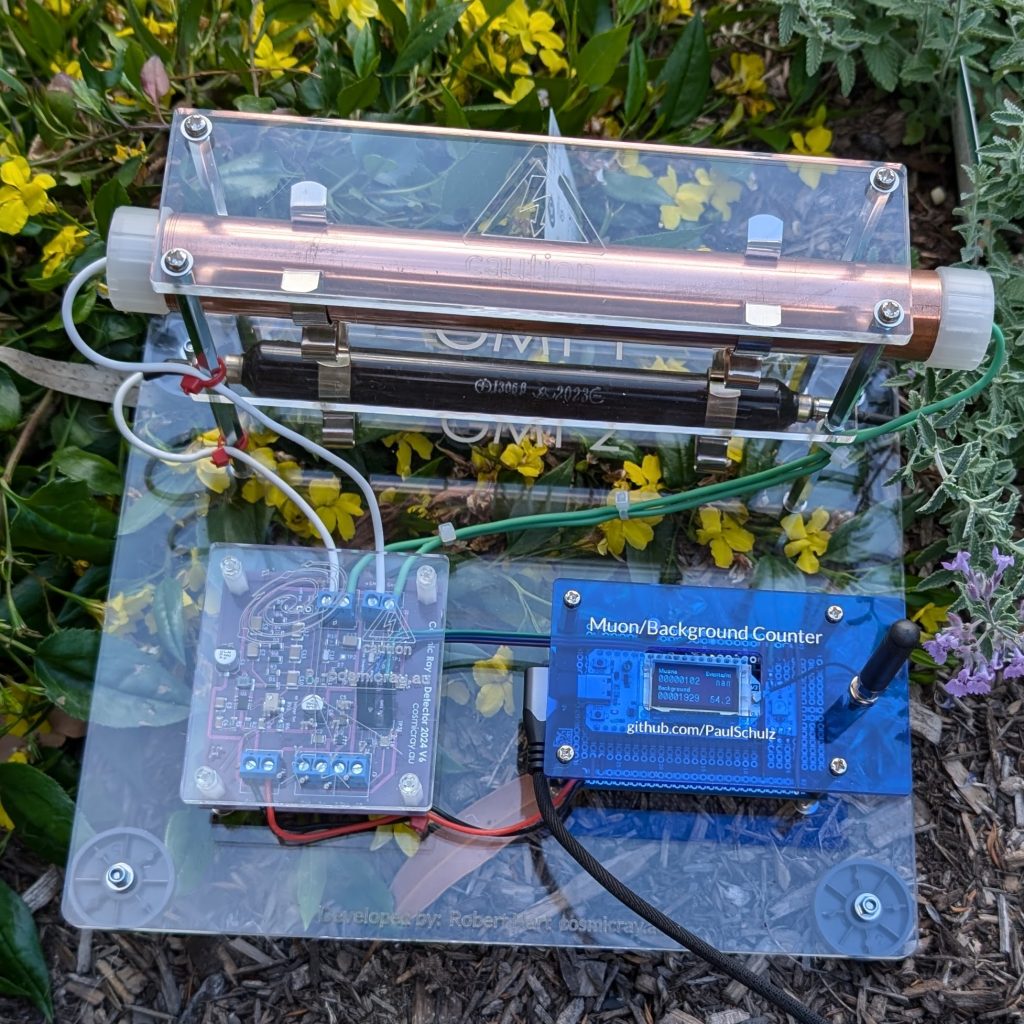
In the video each flash marks the detection of a muon—an elementary particle born from the collisions of high-energy cosmic rays with Earth’s atmosphere, travelling to us from the depths of interstellar space. The small screen here indicates the number of muons passing through the detector and the natural background radiation in our surrounding environment.
Despite the name, “cosmic rays” are not actually rays but rather high-energy particles, primarily protons and helium nuclei created many millions to billions of years ago. Particles created within stars and then ejected after supernova explosions. Then accelerated to near the speed of light by powerful magnetic shockwaves in the wake of these cataclysmic events of supernova, binary star collisions, and the relativistic particle jets at the poles of black holes after the ruminants of stars are ripped apart in the accretion disk and eaten.


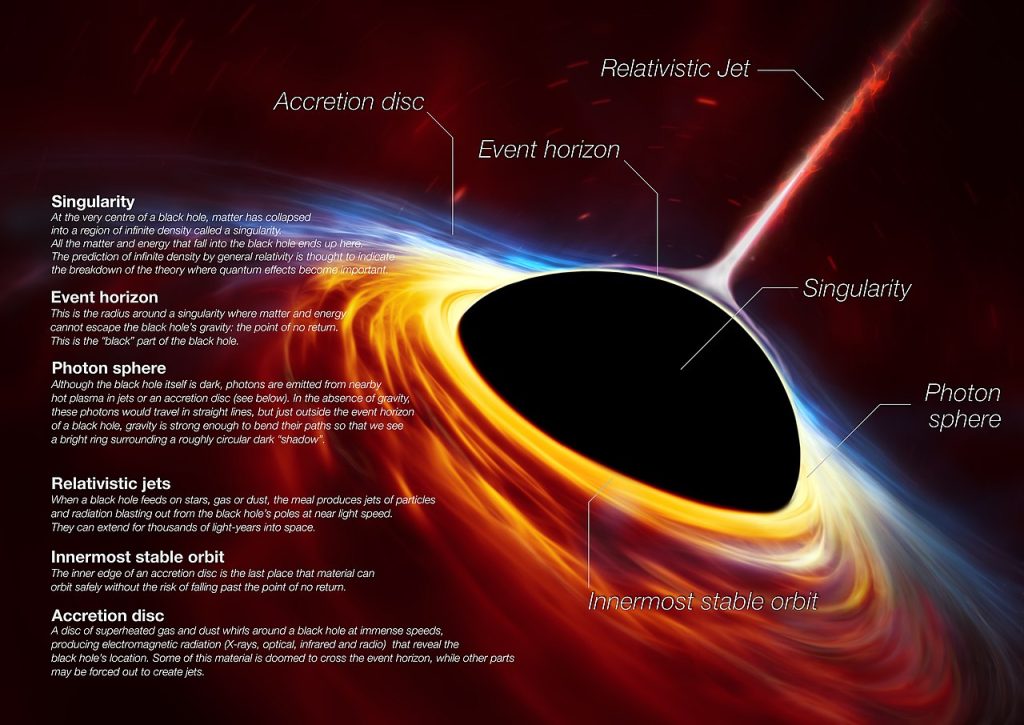
Images sourced from Wikipedia STScI/ESO/Nasa/University of Warwick
These particles journey out in every direction across incredible the vastness of time and space until eventually colliding with our Earth’s atmosphere with such tremendous energy they generate showers of exotic elementary particles.
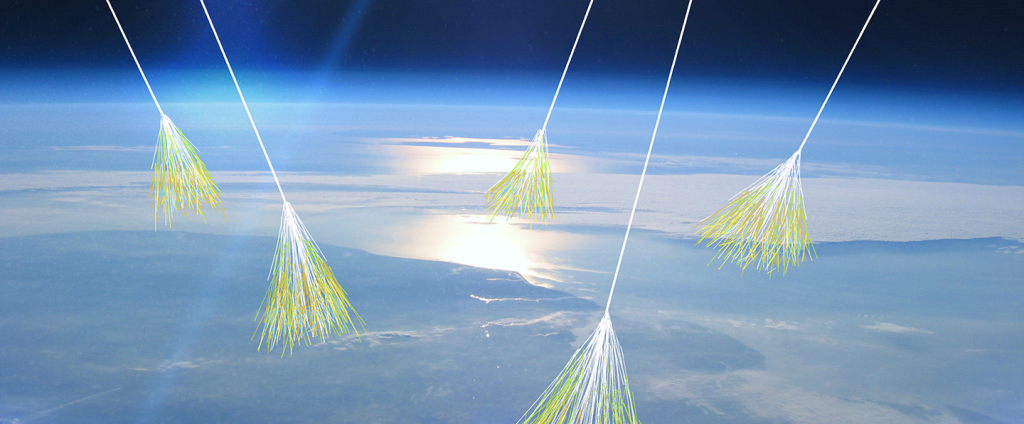
Image by: Dr Clewer – Surrey Space Centre
Many of these particles decay quickly or are difficult to measure. However, an elementary particle called the muon—a heavier cousin of the electron—carries a charge that can be detected by a common Geiger counter. Due to its relativistic speed, which is about 98% of the speed of light, the muon experiences time dilation. This effect delays its decay, allowing it travel down to sea level where it can be detected. Millions of these particles pass through us, buildings, and deep into the Earth every second—an invisible phenomenon that has occurred since the formation of our planet.
However, background radiation is also present in our environment, though typically low levels, cosmic ray muons can make up less than 30% of this background noise, even in a clean environment. As a result, using a Geiger counter on its own, even with alpha shielding to block radon and local sources, is not sufficient for isolating cosmic ray muons.
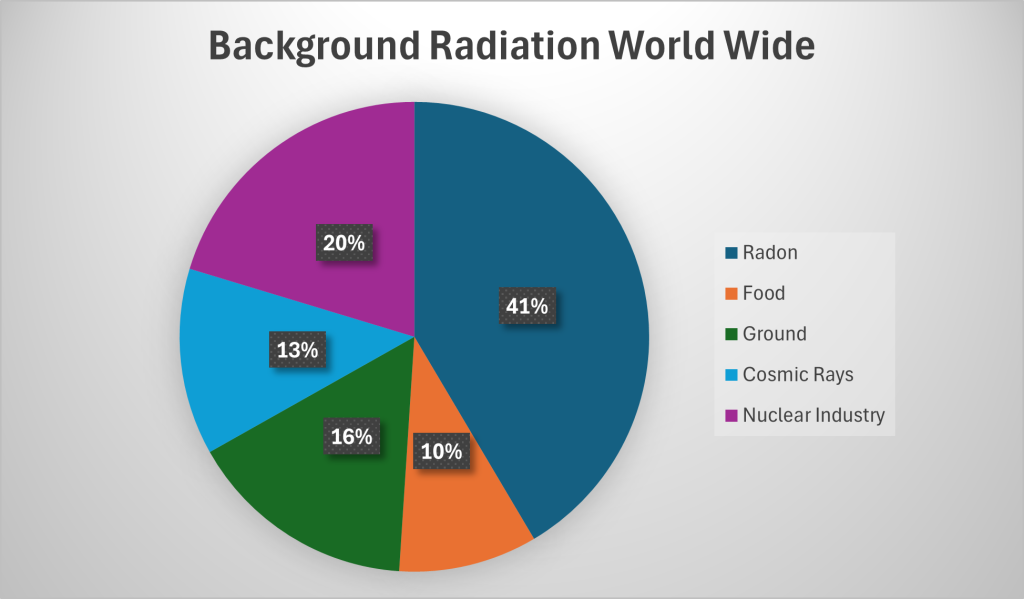
Note: Worldwide average excluding medical sources, locations vary greatly. Data source wikipedia.
Consquently, in order to distinguish between background radiation and cosmic ray muons, we must also use the coinsidance method. A method was first developed in the 1930s by Italian experimental physicist Bruno Rossi, who was fascinated by the mysteries of cosmic rays. Driven by the need for a more reliable and practical way to measure these phenomena, he introduced the use of multiple Geiger–Müller tubes in a “coincidence circuit“.
The core concept of a ‘coincidence circuit‘ in signal processing is that when a single detector registers a signal pulse amid random noise, there’s a chance the pulse could be noise. However, if two detectors simultaneously detect the same signal pulse, the probability that both detected noise is statistically squared, making it far less likely. Since background radiation in most locations is quite low—only a few counts per minute—and can be further reduced with shielding, the likelihood that a coincidence detection is from cosmic ray muons, rather than background radiation, increases significantly.
This detector features my latest Cosmic Ray Muon Detector design, incorporating a low-noise, stabilized HV supply for the Geiger–Müller tubes (GMT), pulse shaping, coincidence circuitry, and a regulated low-noise 3.3V logic output for digital processing using common off-the-shelf devices.
Two large GMTs (low Alfa sensitivity) are positioned in a frame, one above the other. The top tube is enclosed in a copper shield, while the bottom tube remains uncovered to measure background radiation. The shielding increases the statistical difference in noise between the two GMTs in the coincidence circuit. This setup serves two key purposes: 1) To distinguish the noise in each GMT from natural radioactivity in the local environment, and 2) To detect cosmic ray muons, which have high energy and speed, allowing them to pass through both the shielding and the GMTs. The combination of shielding and the coincidence circuit effectively differentiates between slow-moving particles from background radiation and fast-moving muons.
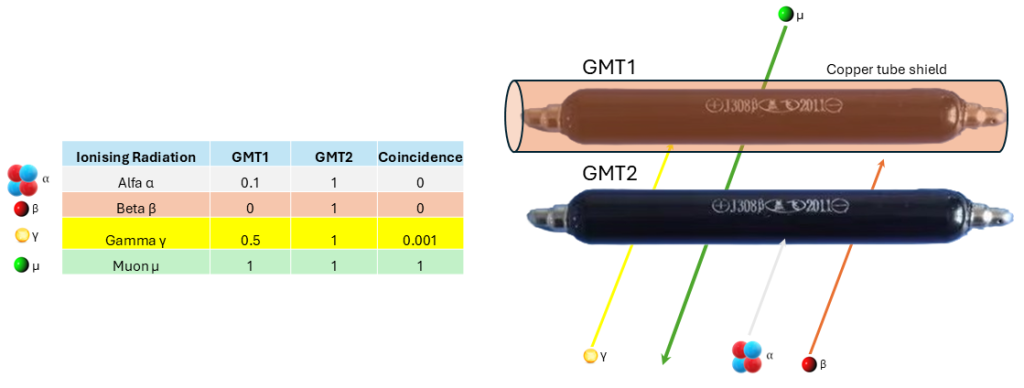
Shielding a GMT from alpha radiation, one of the most common forms in the local environment, is quite easy. Beta radiation can also be blocked using conductive metals like aluminum or copper. Gamma radiation, being highly penetrative, is much harder to filter. However, gamma rays occur at very low count rates and in random directions and times, making the probability of detection in both GMTs simultaneously very low.
To count these events I have collaborated with Paul Schulz to use a Heltec ESP32 WiFi LoRa 32(V3) with OLED screen. This board can count the number of Muons from the coincidence circuit as well background radiation pulses from GMT2. Where coincidence detections drive an addressable LED where it will flash to represent a Muon being detected.

Wiring of Cosmic Ray Muon Detector with the ESP32 WiFi LoRa 32(V3)
Vist Pauls Github for the code:
https://github.com/PaulSchulz/hardhack-muon-detector/releases/tag/20241013-01